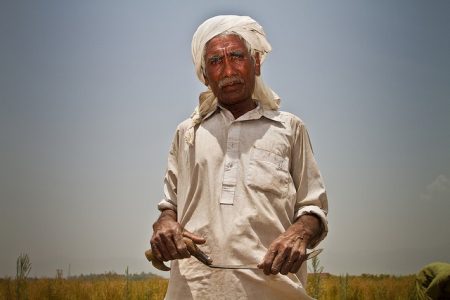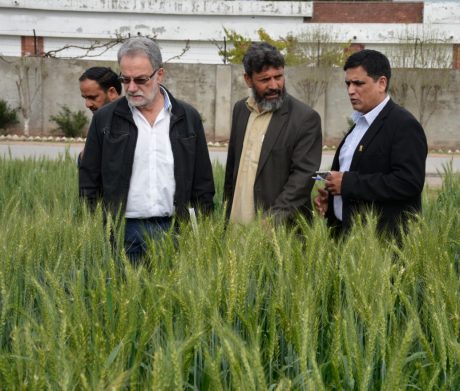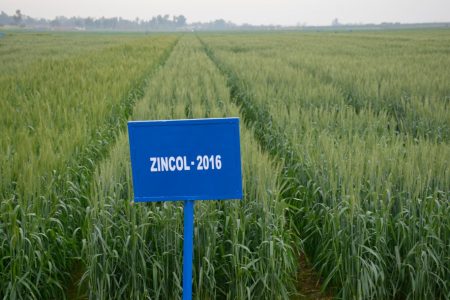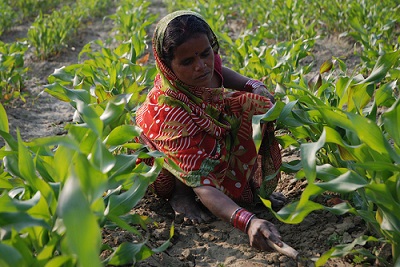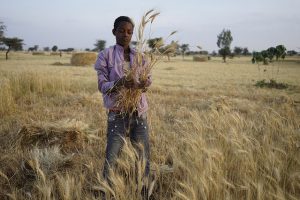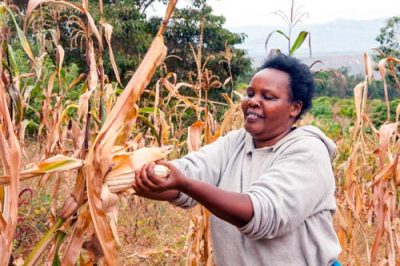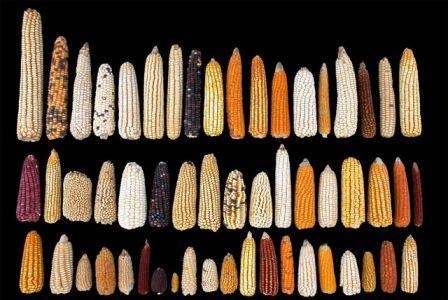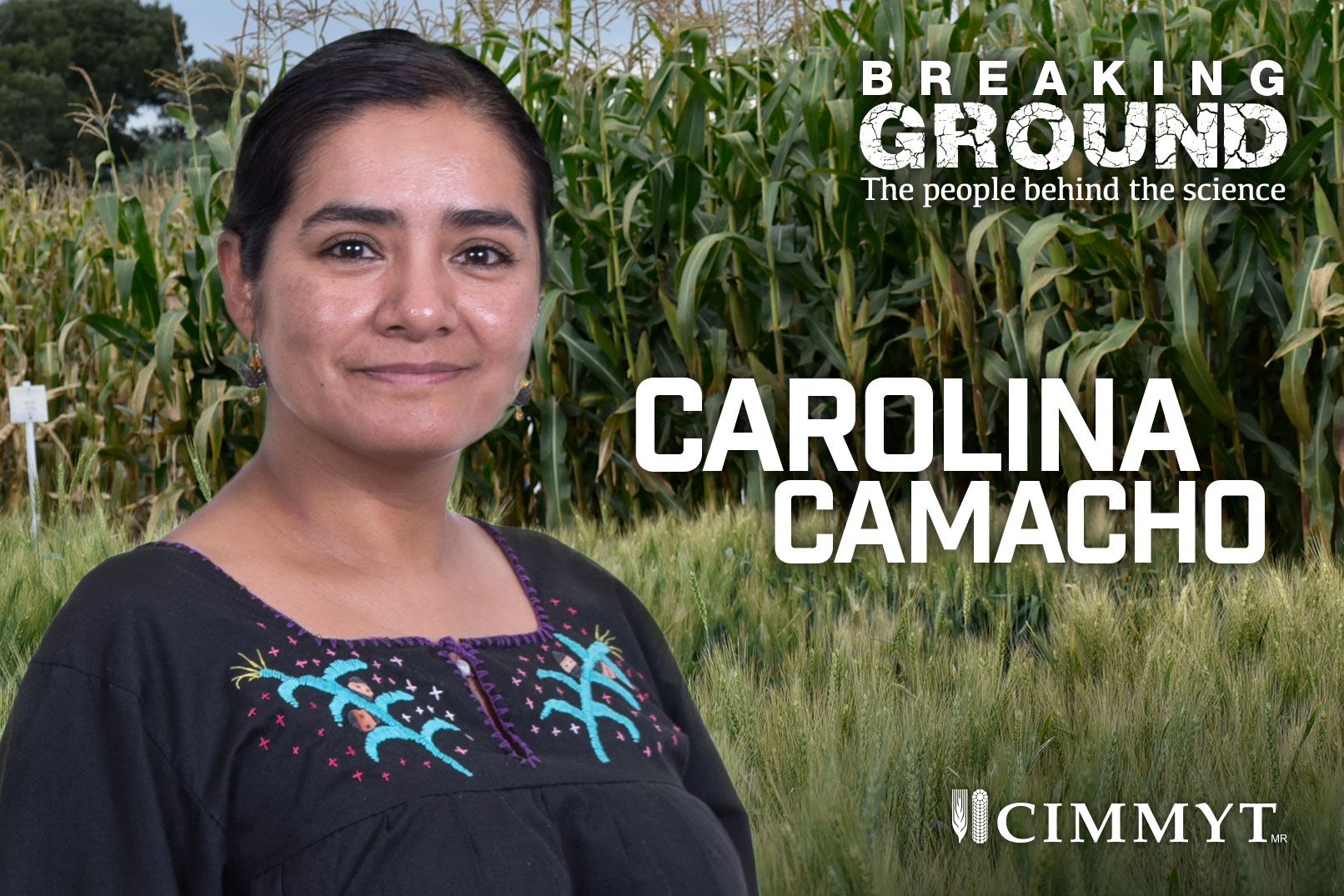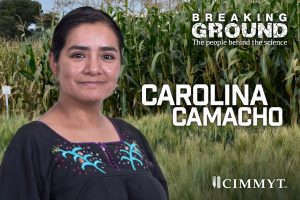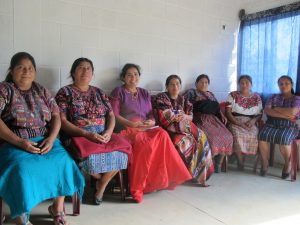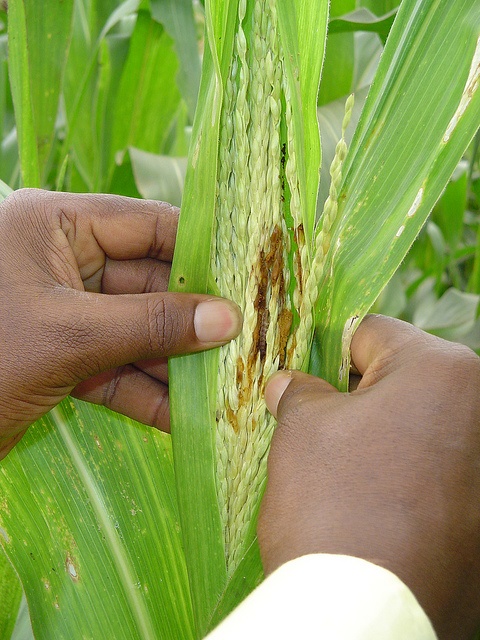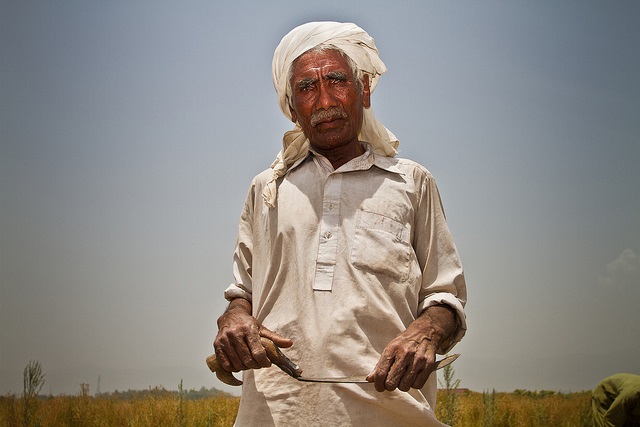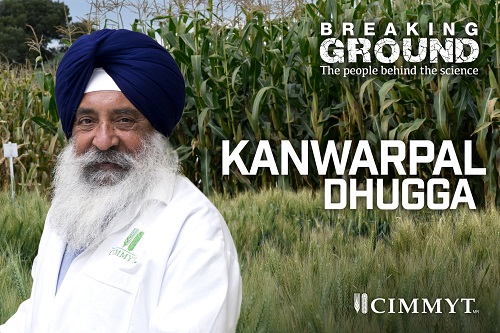New Publications: Improving wheat breeding through modern genetic tools
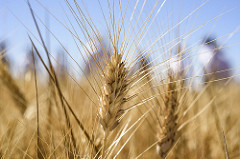
EL BATAN, Mexico (CIMMYT) – A new study shows how wheat breeders can more efficiently increase yield and improve their selections by using modern genetic tools.
Wheat is the most widely cultivated crop in the world, and provides one fifth of the protein and calories consumed globally. Demand for wheat by 2050 is predicted to increase by 70 percent from today’s levels due to population growth and dietary changes, but new diseases, diminishing resources and climate change are making it harder for farmers to meet future needs.
Researchers at the International Maize and Wheat Improvement Center (CIMMYT) recently found that spring wheat breeders can incorporate genetic testing with traditional methods to increase yield and quality faster than ever before.
The study’s authors examined the effects different environments had on spring wheat yield. By using genetic selection, they were able to predict complex traits more efficiently than if they had only used the traditional method of pedigree selection, where researchers choose the best plants from each generation to use for breeding the next generation.
According to the authors, developing genetic selection models is an important step to accelerate the rate of genetic gains and grain yields in plant breeding.
Read the full study “Genomic prediction with pedigree and Genotype X environment interaction in Spring Wheat grown in South and West Asia, North Africa, and Mexico ” and check out other recent publications from CIMMYT staff below.
- Genome-wide association study in wheat identifies resistance to the cereal cyst nematode Heterodera Filipjevi. Pariyar, S.R., Dababat, A.A., Sannemann, W., Erginbas-Orakci, G., Elashry, A., Siddique, S., Morgounov, A.I., Leon, J., Grundler, F. In: Phytopathology, vol. 106, no.10, p.1128-1138.
- Genomic characterization of phenylalanine ammonia lyase gene in buckwheat. Thiyagarajan, K., Vitali, F., Tolaini, V., Galeffi, P., Cantale, C., Vikram, P., Sukhwinder-Singh, De Rossi, P., Nobili, C., Procacci, S., Del Fiore, A., Antonin, A., Presenti, O., Brunori, A. In: PLoS One, vol.11, no.3: e0151187.
- Genomic prediction models for grain yield of spring bread wheat in diverse agro-ecological zones. Saint Pierre, C., Burgueño, J., Fuentes Dávila, G., Figueroa López, P., Solís Moya, E., Ireta Moreno, J., Hernández Muela, V.M., Zamora Villa, V., Vikram, P., Mathews, K., Sansaloni, C.P., Sehgal, D., Jarquín, D., Wenzl, P., Sukhwinder-Singh, Crossa, J. In: Nature Scientific reports, vol.6, no. 27312.
- Genomic prediction of genotype x environment interaction kernel regression models. Cuevas, J., Soberanis, V., Perez-Elizalde, S., Pérez-Rodríguez, P., De los Campos, G., Montesinos-Lopez, O.A., Burgueño, J., Crossa, J. In: The Plant Genome, vol.9, no.3, p.1-20.
- Genomic prediction using phenotypes from pedigreed lines with no marker data. Ashraf, B., Edriss, V., Akdemir, D., Autrique, E., Bonnett, D.G., Janss, L., Singh, R.P., Jannink, J.L., Crossa, J. In: Crop Science, vol. 56, no. 3, p. 957-964.
- Genetic gains in yield and yield related traits under drought stress and favorable environments in a maize population improved using marker assisted recurrent selection. Bankole, F., Menkir, A., Olaoye, G., Crossa, J., Hearne, S., Unachukwu, N., Gedil, M. In: Frontiers in Plant Science, v.8, no.808.
- Genetic yield gains in CIMMYT’s international elite Spring Wheat yield trials by modeling the Genotype X environment interaction. Crespo-Herrera, L.A., Crossa, J., Huerta-Espino, J., Autrique, E., Mondal, S., Velu, G., Vargas, M., Braun, H.J., Singh, R.P. In: Crop Science, v. 57, p.789-801.
- Genome-wide association mapping and genome-wide prediction of anther extrusion in CIMMYT spring wheat. Muqaddasi, Q.H., Reif, J.C., Zou Li, Basnet, B.R., Dreisigacker, S., Roder, M.S. In: Euphytica, v. 213, no. 73, p.1-7.
- Genome-Wide prediction of metabolic enzymes, pathways, and gene clusters in plants. Schlapfer, P., Zhang, P., Chuan Wang, Taehyong Kim, Banf, M., Lee Chae, Dreher, K.A., Chavali, A.K., Nilo-Poyanco, R., Bernard, T., Kahn, D., Rhee, S.Y. In: Plant Physiology, v. 173, p. 2041-2059.

